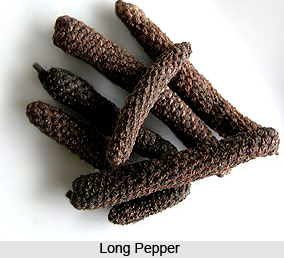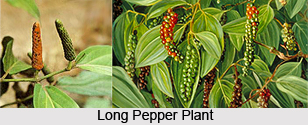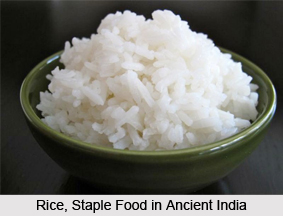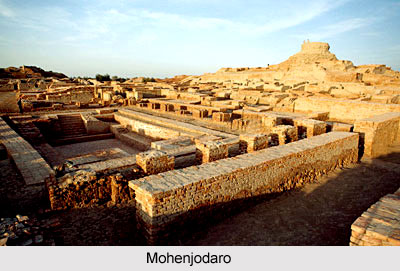 Botanical names:Piper longum Linn.
Botanical names:Piper longum Linn.
Family names:Piperaceae.
Indian names are as follows:
Hindi and Punjabi:Pipul, Pipli, Piplamul
Bengali:Pipli, Piplamore (root)
Gujarati:Pipli
Kannada:Hippali, Hippalibali, Kuna
Malayalam:Tippali, Pippali
Marathi:Pimpli
Oriya:Pippoli
Sanskrit:Pippali
Sindhi:Pippli
Tamil:Thippali
Telugu: Tippili, Pippallu
Urdu:Pipul, Pipli.
Stems of the plant creeping, jointed; young shoots downy; leaves 5 to 9 cm long, 3 to 5 cm wide, ovate, cordate with broad rounded lobes at base, spikes cylindrical pedunculate, male larger and slender, ovoid, yellowish orange, sunk in fleshy spike.
Indian long pepper is mostly derived from the wild plants, the main sources of supply being Assam, West Bengal, and Uttar Pradesh including Uttaranchal. It is reported to be cultivated at low elevations in the Annamalai hills in Tamil Nadu and parts of Meghalaya, particularly in the Cherrapunji area. Long pepper is cultivated on a large scale in limestone soil, 450 to 600 meters below the Cherrapunji region, which receives very heavy rains from the end of March to the middle of September and where the relative humidity is high.
 There is relatively high demand of this spice in domestic market in India. Consequently a large quantity of long pepper is imported by India from Malaysia and Singapore. Since there is good scope to meet this demand by producing and processing within the country, there is scope to utilize this resource for rural industrialization programme, there by reducing import bills.
There is relatively high demand of this spice in domestic market in India. Consequently a large quantity of long pepper is imported by India from Malaysia and Singapore. Since there is good scope to meet this demand by producing and processing within the country, there is scope to utilize this resource for rural industrialization programme, there by reducing import bills.
Recent work on its fruit has shown the presence of the alkaloids, piperine (4 to 5%) and piplartine (25%), and two new alkaloids, one of which is designated as alkaloid A. this is closely related to pellitorine producing marked salivation, numbness and a tingling sensation of mucous membranes of the mouth. A sample of dried fruit of long pepper on steam distillation gave 0.7% of an essential oil with spicy odor resembling that of pepper and ginger oils.
The fruits are used as spice and also in pickles and preserves. They have a pungent pepper like taste and produce salivation and numbness of the mouth. In Jharkhand, the root is used to ferment rice beer. In Andaman and Nicobar Islands, the leaves are chewed like betel leaves.
The fruits as well as roots are credited with numerous medicinal uses, and may be used for diseases of respiratory tract, viz. cough, bronchitis, asthma etc., as counter irritant and analgesic when applied locally for muscular pains and inflammation; as snuff in coma and drowsiness and internally as carminative; as sedative in insomnia and epilepsy; as general tonic; as anthelmintic and in dysentery. Besides fruits, the roots and thicker parts of the stem are cut and dried and used in medicinal preparations in Ayurvedic and Unani systems.



